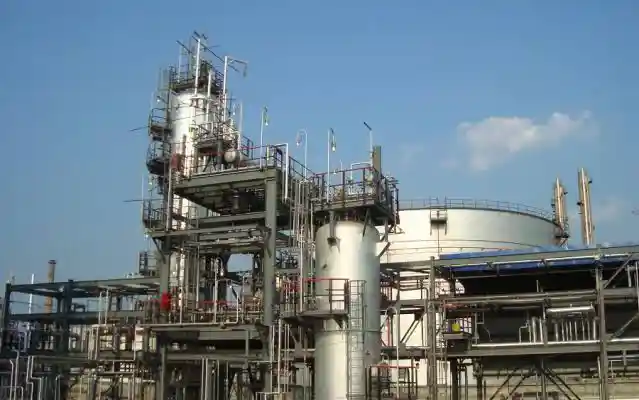The Port Harcourt Refinery, one of Nigeria’s most significant petroleum processing facilities, continues to be a critical focal point in the nation’s energy and economic strategy. Despite years of operational dormancy and concerns over mismanagement, the Nigerian National Petroleum Company Limited (NNPCL) has reaffirmed its decision to retain and rehabilitate the refinery, rather than privatize it.
NNPCL Confirms Commitment to Full Rehabilitation
During a recent town hall meeting at the NNPC Towers in Abuja, Group Chief Executive Officer Mr. Bayo Ojulari disclosed that the sale of the Port Harcourt Refinery has been officially ruled out. This announcement follows months of public speculation and strategic review by the company.
TJ News Nigeria reports that NNPCL’s decision marks a pivotal shift in the federal government’s oil infrastructure strategy, moving away from privatization towards long-term value retention through high-grade rehabilitation.
A company statement noted:
“The Nigerian National Petroleum Company Limited has officially ruled out the sale of the Port Harcourt Refining Company, reaffirming its commitment to completing high-grade rehabilitation and retention of the plant.”
Key Highlights from the NNPCL Statement
- No Sale: The company has reversed any plans to divest the asset due to concerns over potential value erosion.
- Increased Investment: NNPCL is expected to inject additional funds to fast-track rehabilitation efforts.
- Technical Partnerships: Discussions are ongoing with advanced technical partners to ensure the refinery is restored to global operational standards.
Port Harcourt Refinery Address
The Port Harcourt Refining Company (PHRC) is located in Alesa-Eleme, Eleme Local Government Area, Rivers State, Nigeria. The facility sits on the outskirts of Port Harcourt city and is accessible via the East-West Road, serving as a major hub for Nigeria’s southern oil and gas corridor.
Address:
Port Harcourt Refining Company Limited (PHRC)
KM 14, East-West Road, Alesa-Eleme, Rivers State, Nigeria.
Port Harcourt Refinery Capacity
The Port Harcourt Refinery consists of two operational complexes:
- Old Refinery (PHRC I): Commissioned in 1965 with an installed capacity of 60,000 barrels per day (bpd).
- New Refinery (PHRC II): Commissioned in 1989 with an installed capacity of 150,000 barrels per day (bpd).
Combined Capacity:
The combined nameplate capacity stands at 210,000 barrels per day, making it the largest refining facility in Nigeria. However, due to years of technical failure and underinvestment, the refinery has functioned well below its capacity and has been largely idle since 2019.
Port Harcourt Refinery Recruitment
As of July 2025, NNPCL and the Port Harcourt Refining Company have not announced any open recruitment. However, with rehabilitation efforts intensifying, there is an anticipated need for skilled workers and technical professionals in various fields, including:
- Mechanical and electrical engineering
- Process and chemical engineering
- Quality assurance and safety
- Logistics and plant maintenance
How to Stay Updated:
- Official Website: www.nnpcgroup.com
- Job Portals: NNPCL occasionally posts verified job openings on platforms like the Nigerian Content Development and Monitoring Board (NCDMB) portal.
- Warning: Beware of fraudulent recruitment schemes. NNPCL does not charge any fees for job applications.
Why the Refinery Matters
The Port Harcourt Refinery is more than just an industrial facility. Its strategic importance includes:
- Reducing Fuel Imports: A fully functional refinery would significantly cut Nigeria’s reliance on imported refined products.
- Saving Forex: Refining petroleum domestically can reduce foreign exchange expenditure by billions annually.
- Job Creation: Rehabilitation projects and ongoing operations would create thousands of skilled and unskilled jobs.
- Energy Security: Improved local refining capacity will enhance Nigeria’s energy independence.
Challenges in the Rehabilitation Process
Despite NNPCL’s renewed assurances, several challenges remain:
- Delays and Overruns: Past rehabilitation attempts have suffered from cost overruns and scheduling delays.
- Funding Gaps: The scope of work needed for full restoration may require billions of dollars.
- Transparency: Stakeholders and civil society groups continue to call for greater oversight in how funds are spent.
Role of International Partners
NNPCL has hinted at involving technical partners with global expertise in refinery operations. Although specific names haven’t been disclosed, experts believe partnerships with firms from countries like Italy, India, or China may play a role.
What to Expect Next
The federal government and NNPCL are expected to:
- Publish a new project timeline for full refinery rehabilitation
- Provide periodic updates on progress
- Clarify the roles of domestic and international contractors involved
There is also speculation that the Port Harcourt refinery may become a model for rehabilitating Nigeria’s other refineries in Warri and Kaduna.
Related Developments
- Dangote Refinery: the 650,000-barrel-per-day Dangote Refinery will also impact Nigeria’s refining landscape.
- Petroleum Industry Act (PIA): The PIA aims to reform Nigeria’s oil sector and could influence future management of state-owned refineries.
Final Thoughts
The decision to retain and rehabilitate the Port Harcourt Refinery signals NNPCL’s strategic intent to reclaim national refining capacity. While challenges remain, the move is widely seen as a necessary step toward addressing Nigeria’s longstanding energy infrastructure deficits.
All eyes remain on how quickly and transparently the project will proceed, with stakeholders demanding not just completion—but results that translate into real economic benefits for Nigerians.
